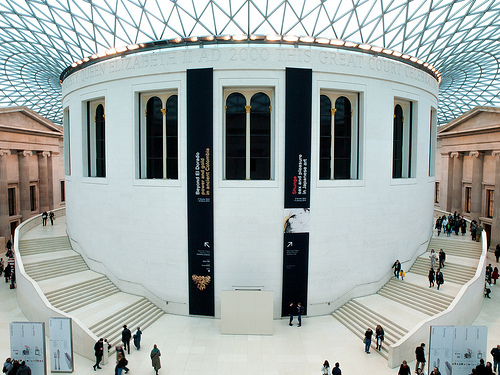The British Museum
Don’t think that the British Museum is only full of artifacts from old England. There were days when the incredible English warriors brought back the treasures of distant shores and placed them and the British Museum. Some of those treasures include the earliest known image of Christ, the Easter Island statue, and the Rosetta stone. There are also a lot of Ancient Egyptian and Greek treasures including the Elgin Marbles.

Today the British Museum was founded as a universal museum although it was originally founded as a museum of cultural art objects. The will of the physician and naturalist Sir Hans Sloan (1660 – 1753) are where its foundations lie. During his lifetime Sloane gathered an enormous collection of curiosities and, not wanting to see his collection broken up after death, for the sum of £20,000 he bequeathed it all to King George II for the nation.
Sloane’s collection at the time consisted of around 71,000 objects of all kinds including some 7,000 manuscripts, 40,000 printed books, numerous specimens of natural history including approximately 337 volumes of prints, dried plants, and drawings including antiquities from the Americas, the ancient Far and Near East, Rome, Greece, and Egypt.
The Museum was founded as an encyclopedia of art and nature 250 years ago. Today the manuscripts and books it once held are now part of the British Library. It also no longer maintains collections of natural history. However, the Museum still preserves its universality in its collections of artifacts which represent the cultures of the world, both modern and ancient. The original 1,753 collection has grown to over 150 million at the British Library, 70 million at the Natural History Museum, and 13 million at the British Museum.
Designed and conceived by Sydney Smirke, the Round Reading Room opened in 1857. Researchers came here to study in the Museum’s huge library for almost 150 years. When the British Library moved to a new building at St. Pancrasin 1997 the Reading Room was closed. Today it has been transformed into the Walter and Leonore Annenberg Center. It now contains the Paul Hamlyn Library of books about the Museum’s collections, which is open to all visitors.
With the book stacks in the central courtyard of the museum now empty, the process of demolition for Lord Fosters’s glass roofed Great Court can begin. The Great Court, which opened in 2000, was criticized for the lack of exhibition space during a time when the museum was having serious financial difficulties. At the same time the Oceanic and African collections that had once been housed in 6 Burlington Gardens temporarily were given a new gallery in the North Wing which is funded by the Sainsbury family.

